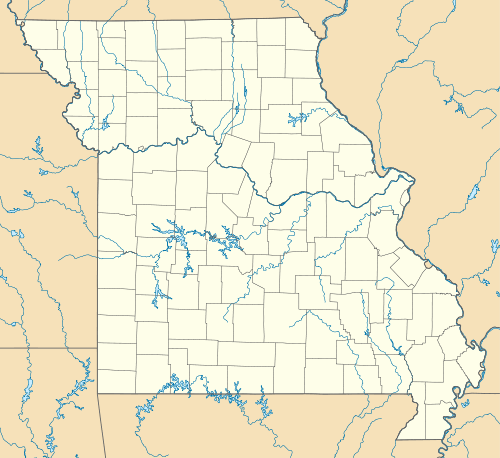Standard Adding Machine Company
|
Standard Adding Machine Building | |
   | |
| Location | 3701 Forest Park Blvd., St. Louis, Missouri |
|---|---|
| Coordinates | 38°38′9″N 90°14′17″W / 38.63583°N 90.23806°WCoordinates: 38°38′9″N 90°14′17″W / 38.63583°N 90.23806°W |
| Area | less than one acre |
| Built | 1903 |
| Architectural style | Other, Industrial |
| NRHP Reference # | 05001328[1] |
| Added to NRHP | November 25, 2005 |
Standard Adding Machine Company was founded in the early 1900s and was the first company to release a 10-key adding machine. The machine was a breakthrough for its time because it dramatically modernized computing. Earlier key driven adding machines, like the comptometer, featured eight or more columns of nine keys, which made them cumbersome and costly and their operators prone to mistakes. The 10 keys were set on a single row.
The invention won an international grand prize during the 1904 World's Fair and was heralded as a "modern life preserver" in an office journal.
History
William H. Hopkins, the inventor of the Standard Adding Machine, was a minister. When he moved to St. Louis in 1885 he served as chaplain and then pastor of St. Louis Second Christian Church. He continued to invent during those years and to find better ways to make an adding machine. In the 1890s, he left Second Christian Church and became assistant editor of the company that published The Christian Evangelist.
The Standard Adding Machine Company released the first 10-key adding machine in between 1901[2] and 1903.[3] William Hopkins filed his first patent on October 4, 1892. Hopkins' success led to competition. By 1915, other adding machine companies were vying for business. In 1916, Hopkins died, and his company began to decline.
Standard Adding Machine closed in 1921. In the decades since, the building housed businesses such as St. Louis Pump & Equipment Co., Lee Paper Co., and most recently, Harrison-Williams Store Fixtures. Vacant since 2003, the building was renovated in 2005 by Aquinas Institute of Theology.
Recognition
Because of the historical significance of the adding machine, the Standard Adding Machine building is listed on the National Register of Historic Places.
Notes
- ↑ National Park Service (2010-07-09). "National Register Information System". National Register of Historic Places. National Park Service.
- ↑ G.C. Chase: History of Mechanical Computing Machinery, Vol. 2, Number 3, July 1980, page 221, IEEE Annals of the History of Computing
- ↑ Thomas A. Russo: Antique Office Machines: 600 Years of Calculating Devices, 2001, p.114, Schiffer Publishing Ltd, ISBN 0-7643-1346-0
External links
- rechenmaschinen-illustrated.com Picture of an early Standard machine.
- Announcements and actions on properties for the National Register of Historic Places Retrieved 12/15/2010.